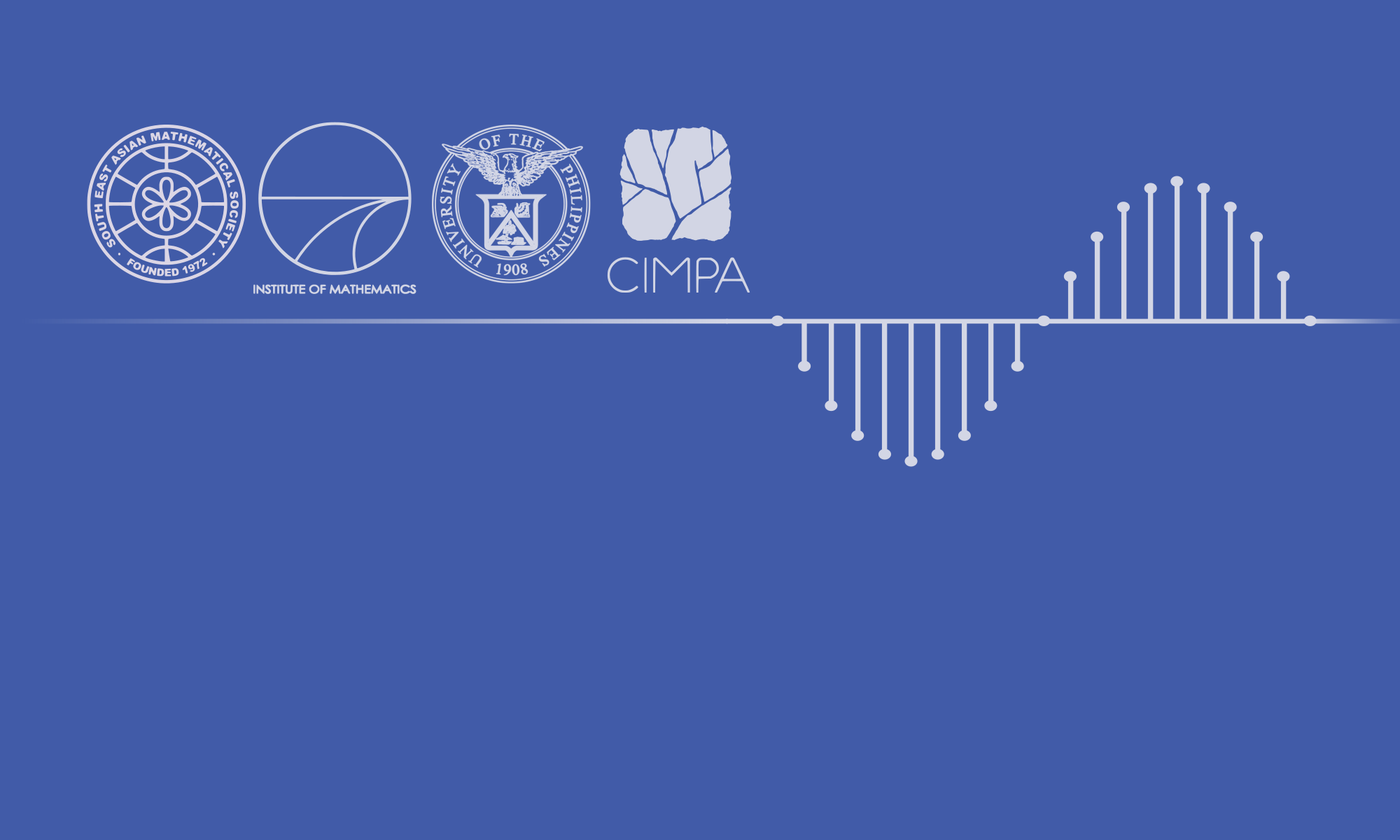- Frames, Fusion Frames, and their Applications
Gino Angelo Velasco, Dr.rer.nat.
Institute of Mathematics, University of the Philippines Diliman, Philippines
Roza Aceska, Dr.rer.nat.
Department of Mathematical Sciences, Ball State University, Indiana, U.S.A.
Abstract: We start with an introduction to frames in the finite-dimensional setting. We review their properties and provide some elementary examples, then discuss reconstruction procedures using frames, including some basic reconstruction algorithms. We shall also briefly discuss the discrete Fourier transform and Gabor frames, and illustrate their application in signal processing. Every frame can be interpreted as a special case of fusion frame systems, thus wee highlight their properties relevant for applications and look into custom-designed fusion frames, related to specific sampling strategies per subspace. We analyze cases where fusion frames are superior to conventional frames, and compare centralized versus distributed reconstructions.
References:- Christensen, O., An Introduction to Frames and Riesz Bases (2nd ed.). Birkhäuser, 2016.
- Casazza, P. G.; Kutyniok, G. (eds.), Finite Frames: Theory and Applications. Birkhäuser, 2013.
- Compressed Sensing and Greedy Sparse Approximation
Jean-Luc Bouchot, Ph.D.
School of Mathematics and Statistics, Beijing Institute of Technology, China
Abstract: This course will give an overview of the current state of the art in compressed sensing and describe efficient greedy approaches to solve the sparse approximation problem. Starting from the very basics of the sparse approximation problem, we will review all the steps up until some examples in medical images and uncertainty quantification in parametric PDEs.
References:- H. Foucart, H. Rauhut, “A mathematical introduction to compressive sensing”, Birkhauser, 2013 .
- J.-L. Bouchot, S. Foucart, P. Hitczencko, “Hard thresholding pursuit algorithms: Number of iterations”, Applied and computational harmonic analysis, 2016.
- J.-L. Bouchot, H. Rauhut, C. Schwab, “Multi-level compressed sensing Petrov-Galerkin discretization of high-dimensional parametric PDEs”, arXiv, 2017.
- M. Lustig, D. Donoho, JM Pauly, “Sparse MRI: The application of compressed sensing for rapid MR Imaging”, Magnetic resonance in medicine, 2007.
- Introduction to Kernel Methods
Rachelle Rivero, Ph.D.
Institute of Mathematics, University of the Philippines Diliman, Philippines
Abstract: Kernel methods are a powerful tool in machine learning as they allow fusion of heterogeneous data and to efficiently build a model for classification tasks. This course starts with an introduction on reproducing kernel Hilbert spaces (RKHS) theory then proceed to the discussion of kernel methods and their properties. The course will also cover some well-known kernels and give examples on how they can be used to classify real-world data.
References:- Shawe-Taylor, J. and Christianini, N., Kernel Methods for Pattern Analysis. Cambridge University Press, 2004.
- Christianini, N. and Shawe-Taylor, J., An Introduction to Support Vector Machines and other kernel-based learning methods. Cambridge University Press, 2000.
- Schölkopf, B. and Smola, A., Learning with Kernels: Support Vector Machines, Regularization, Optimization, and Beyond. MIT Press, 2002.
- Frames in Time–Frequency and Time–Scale Analysis
Jeffrey Hogan, Ph.D.
School of Mathematical and Physical Sciences, The University of Newcastle, Australia
Joseph D. Lakey, Ph.D.
Department of Mathematical Sciences, New Mexico State University, U.S.A.
Abstract: This course will provide some historical background regarding the development of Gabor frames and wavelet frames, review some of the important recent theoretical developments and connections to related areas of analysis, including operator theory, then elaborate on how these different families of frames are used in different applications. As examples, the role of wavelet frames in denoising data with high inherent variability and the role of Gabor systems in phase synchrony problems will be discussed. Emphasis will be placed on frames that have optimal time–frequency localization properties, and that are advantageous in spectrum estimation and extrapolating signals from sample data. Matlab code will be provided for some hands on examples.
References:- Hogan, J. A.; Lakey, J. D., Time-Frequency and Time-Scale Methods: Adaptive Decompositions, Uncertainty Principles, and Sampling. Birkhäuser, 2005.
- Hogan, J. A.; Lakey, J. D., Duration and Bandwidth Limiting: Prolate Functions, Sampling, and Applications. Birkhäuser, 2012.
- Optimization for Machine Learning
Jean-Baptiste Caillau, Ph.D.
Université Côte d’Azur, CNRS, Inria, LJAD, France
Abstract: These introductory lectures will focus on the role of optimization, and most notably of convex optimization, in machine learning. The following topics will be addressed.
1. Proximal methods in supervised learning
2. Semi-definite relaxation for clustering
3. Reinforcement via Q-learning
References:- Anjos, M. F.; Lasserre, J. B., Handbook on Semidefinite, Conic and Polynomial Optimization. Springer, 2011.
- Combettes, P. L.; Pesquet, J.-C., Proximal splitting methods in signal processing. Fixed-point algorithms for inverse problems in science and engineering, 185-212, H.H. Bauschke et al. (eds.), Springer Optimization and Its Applications 49, 2011.
- Recht, B., A tour of reinforcement learning: the view from continuous control. arXiv:1806.09460, 2018.
- Sutton, R. S.; Barto, A. G., Reinforcement learning: an introduction. MIT press, 2018.

SEAMS School 2020 on Modern Trends in Signal and Data Processing
7̶-̶1̶5̶,̶ ̶J̶u̶l̶y̶ ̶2̶0̶2̶0̶ (TBA), Institute of Mathematics, University of the Philippines Diliman, Quezon City, Metro Manila, Philippines